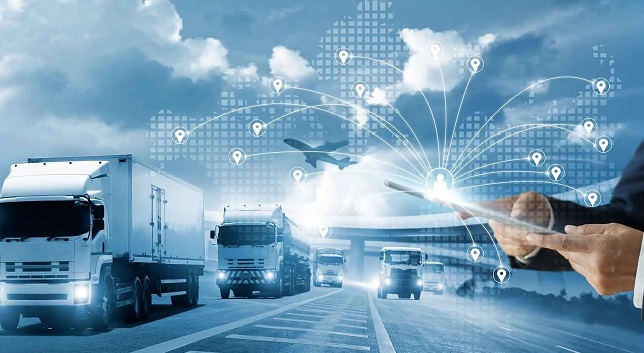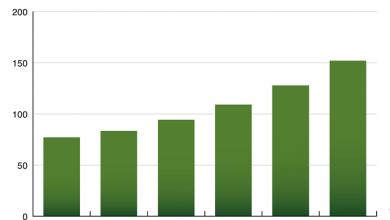Understanding Telematics for the Transport and Logistics Industry

The word telematics has more or less been associated with the automobile industry for decades due to its vast applications in the transport and logistics industry. Colloquially referred to as vehicle telematics, it is a system that allows a user to track the movement of vehicles like cars, trucks, machinery, and other mobile equipment in real-time on an electronically generated map, majorly using GPS technology and On-board Diagnostics (OBD).
What exactly is telematics?
The notion that a telematics system is limited to merely using a GPS or Global Positioning System for real-time tracking of vehicles is undermining the true capability of a telematics system. The advent in technology and increasing use of telematics for commercial purposes has pushed the boundaries that limit the definition of telematics to another name of a vehicle navigation system. Although the ability to monitor vehicles or fleets in real-time is one of the key USPs of a telematics system, using telematics to improve the overall logistics & transportation productivity is fast gaining pace worldwide.
Modern telematics system software can be seen as an amalgamation of telecommunication and informatics. In simple terms, the fusion of the ability to communicate information over long distances and the field of informatics, i.e., the study of how the data collected, in our case, vehicles, can improve business operations, increasing the overall efficiency of the process.
How does a telematics system work?
To understand how telematics work, we first need to understand the essential components of a telematics system. The centerpiece of any telematics system is a device called BlackBox or T-box. A BlackBox is fitted into a vehicle or vehicles which collects essential data related to the vehicle. This data includes the most crucial metrics like speed, GPS location, mileage, trip recording, drive time, time on site, fuel usage, driver behavior, and driving metrics. Then, based on use, the BlackBox is fitted into the ports of the vehicle for which data is required.
For example, it is an essential component for insurance companies to investigate accidents or crashes as part of insurance claims raised by individuals. When fitted into an engine, it can capture specific information like engine load, temperature, health, errors, etc. It can also be handy for improving safety when driving by tracking door lock-unlock, seatbelt use, cruise control, etc.
The internal algorithm in the black box analyzes the collected data. It then transmits to an external platform or software in real-time through the standard cellular network using the internal SIM card. From there, the end-user can access and analyze through an output platform or software that presents this data in a format that the end-user understands. An example of that would be a mobile application or software used by various companies offering telematics systems. Finally, the user can access all this data processed in the most usable format.
Understanding the need for a telematics system in transportation
A telematics system allows the user to monitor and track various vehicle metrics or an entire fleet of vehicles, including speed, estimated time, driver behavior, fuel level, and vehicle health. Let’s understand the need for a telematics system with an example of an average large-scale transporter in India.
Ghanshyam International is a transporter based in Delhi that manages and runs a fleet of 600 trucks. The company is involved in interstate movements of goods requiring cold storage transport management, and 2/3rd of the trucks are commercial refrigerated trucks used for cold storage transport. Earlier, the said transporter traditionally used to manage their fleet, i.e., fleet managers keeping track of the shipment by contacting the responsible driver via phone. However, it resulted in several problems and inefficiencies due to the scale of the operation. Clients often complained about late deliveries or damaged goods, especially in case of time-sensitive and perishable goods. The steep hike in fuel price in India added to the voes as profit margins became razor-thin due to higher operational costs and dropped in demand for the business due to the impact of the coronavirus pandemic on the transportation sector.
The transporter conducted an external audit to understand fundamental inefficiencies and problems and reduce operational costs while improving profit margins. The audit laid down several issues with their operations that lead to inefficient use of resources, and as a result, substandard operational efficiency. Some of the pressing issues that required immediate attention as per the audit are as follow:
- Delays as a result of unwanted stops made by drivers
- Frequent rerouting and extended trips as a result of poor navigation and lack of real-time traffic data
- Poor fuel efficiency due to recurring instances of engine idling
- Damaged goods and increased fines as a result of overspeeding and rash-driving
- Malpractices in refueling bills due to lack of transparency and manual record-keeping
- Substandard vehicle performance and mileage delivered by vehicles due to improper vehicle maintenance
- Siphoning fuel and theft of goods leading to poor customer experience and increased operational cost
- Poor customer experience due to lack of any vehicle monitoring system in place
The audit brought to the surface the inefficiencies that were affecting the overall health of the operation. The critical issue is the lack of transparency in the process, which has plagued the transport and logistics industry for ages. In addition, hesitancy towards including technology like a telematics system in operations seems to have been the key issue for many Indian transporters. The example mentioned above of Ghanshyam International is no different regarding the lack of inclusion of technology-backed systems in the transport industry.
The advantage of having a telematics system
It is pretty clear from the case study of Ghanshyam International that lack of transparency in operations leads to various inefficiencies, which have been discussed above. However, an important question arises: how will a telematics system software or technology benefit the transporters to improve operational efficiency and cut costs?
To be precise, the USP of telematics system software has been its ability to track vehicular movements in real-time and navigate. The ability to track vehicles using a GPS dramatically improved transparency. Now it was possible for fleet managers to easily keep track of all the vehicles in their fleet virtually. In addition, it did two things of significance; it allowed fleet managers to be centralized the process of keeping tabs on their fleet movement without entirely relying on the driver, and it permitted transporters to detect unusual activity and malpractices.
How can a telematics system benefit the transport industry?
Telematics has revolutionized how businesses manage their transport and logistics in ways no technology has ever before. The entire business model of several billion-dollar companies in this sector would not exist had there not been a technical revolution in the way we use telematics.
For example, ride-sharing apps like Uber, Lyft, Ola would not exist without telematics. Their business model relies on a vehicle tracking system, part of the broader telematics system. It makes it possible for users to book and track their nearest e-taxi drivers to navigate efficiently to the required destination. It also allows the overarching company to monitor and keep track of such an enormous fleet of vehicles. To understand how a telematics system improves operational efficiency and cut operating costs, let us look at some specific features of a telematics system software and how it benefits businesses.
- A telematics system helps make transport & logistics operations more transparent.
A telematics system software helps transporters and business owners get rid of opacity on their operations. A technology-driven, robust vehicle tracking system allows transporters to monitor every active vehicle in their fleet in real-time. Transparency helps fleet managers get alerted if the driver makes unwanted stops or takes longer routes to increase fares, which is a common practice in transportation in India. Moreover, several instances of theft and related malpractices can be prevented and curbed, which costs businesses heavy losses as fleet managers monitor vehicles in real-time. In addition to that, fleet managers can be notified to take appropriate actions immediately in case of a vehicle breakdown or accident.
- A Telematics system assists in route planning & navigation, improving operating efficiency.
An impressive advantage of technology-driven telematics system software is its ability to use historic vehicle & trip data for better route planning, allowing fleet managers to choose the most efficient route for the movement of goods. The state-of-the-art algorithm uses historical data coupled with real-time traffic data to get alerted about barriers like high-traffic routes, road construction, etc. The telematics system helps fleet managers choose the most efficient route for every trip. Additionally, the real-time navigation system helps to optimize routes based on changing road conditions. Fleet managers can be promptly alerted if the driver takes the wrong route or unusual rerouting and takes necessary action. Since the data is based on the historical trip and vehicle data, it is reasonably accurate and helps transporters significantly cut operational and fuel costs.
- A telematics system helps transporters significantly cut fuel costs by better fuel management.
Fuel cost is one of the most significant expenses for any transporter or logistics operator. And, the current fuel price hike in India has become a worrying trend for transporters across the country. Amidst the current global pricing dynamics and pandemic, it is unlikely that fuel prices will come down, which this article explains the impact of fuel price hikes for transporters. Hence, the only viable option to cut fuel expenses is better fuel management and economy. Thankfully, the fuel management systems part of the telematics system can help improve a vehicle’s fuel efficiency. By equipping the fleet with a fuel management system, transporters can,
- Gain insights into fuel usage along with corresponding map location & time. Rich analytics reports on fuel transactions by fuel type, distance covered, amount and cost.
- Get detailed historical fuel fill/theft records which helps them analyze minute-by-minute breakdowns of all fuel usage points, % quantity of fuel stolen, with the exact location and time of fuel theft to support the claim.
- Monitor driver behavior using driver analytics, thus getting alerted in engine idling, leading to excess and unwanted fuel consumption, and take appropriate action. Thus, significantly improving fuel efficiency for the fleet with a large number of vehicles. Additionally, it can also regularize fuel cost calculation by using fuel forms which is more convenient to keep track of than collecting fuel receipts.
- A telematics system can help increase vehicle longevity and improve vehicle performance.
Timely vehicle maintenance is very crucial to efficient fleet management. The Telematics system helps fleet managers keep a check on the health of their vehicles. Vehicles involved in the transportation sector often require long trips resulting in higher wear and tear. Timely vehicle maintenance is the only way to ensure that vehicles are running at optimum efficiency. However, when it comes to large fleets, it becomes challenging to keep track of the maintenance record of each vehicle. Fleet maintenance system, part of telematics system offer,
- Service reminders system that helps fleet managers schedule preventative maintenance based on meter reading, time interval, actual mileage, or engine hours to increase vehicle lifetime, avoid untimely breakdowns, & reduce heavy maintenance costs.
- Collect data from the vehicle’s on-board diagnostics port to facilitate spotting issues such as failing batteries percentage and DTCs engine faults. In addition, it can help set up custom alerts for vehicle defects to protect vehicle health & reduce costs.
- It reduces the instances where a vehicle would incur high maintenance costs as a result of vehicle breakdown. In addition, it also improves engine performance resulting in better mileage, thus, better fuel efficiency.
- In case of vehicle breakdown during a trip, a telematics system offers real-time alerts to your operations team, like live GPS location & nearby vehicle maintenance stations. Thus, allowing help to reach the location of the vehicle, promptly avoiding delivery delays.
- A telematics system strengthens the safety system by using AI to monitor driver performance.
Some companies like fleetx offer advanced features like driver behavior analytics & safety part of the telematics system that can help fleet managers track and manage driver behavior to improve overall fleet productivity. Such features assist in better driver performance evaluation considering factors like fatigue driving, over-speeding, sharp turns, SLA violations, and various other metrics. It enables companies to hold rash drivers accountable and reward more productive employees, thus, improving their service quality and raising safety standards. With much deeper and accurate insights and information related to drivers and vehicles, companies often see an exponential improvement in overall productivity in their operation.
Conclusion
After reading about the benefits of using a technology-driven telematics system for the operation, we are left with a question; Does my business need a telematics system? Of course, the answer to that question would be an unequivocal yes. However, telematics is an overarching system that encompasses various methods and features, all of which may not be required for your business. Thus, it is recommended that companies evaluate their business operation and requirement and choose a telematics system that is suitable and required as per their standards. Unfortunately, however, not all fleet management service providers offer customizable telematics system software.
An important point to keep in mind while choosing a service provider for a telematics system is selecting a provider that offers the freedom to select features for your telematics system based on customizable requirements, which can be scaled up or down based on your scale of operation. Integration of AI & Data, which form the basis of any suitable technology-based telematics system is to be looked at as an essential criterion for businesses keen on making the most out of their investment with higher ROIs, improved fleet efficiency, and reduced costs.
About the author

Anshuman Gupta
Anshuman Gupta is an experienced content writer who writes about technology and sustainability in the domain of transportation & mobility. Currently working at Fleetx which is an intelligent fleet management platform that helps fleet owners make smart decisions based on real-time insightful analytics. fleetx helps to maximize profit by monitoring the fleet’s health & performance under a centralized platform, accessible from anywhere.
Author’s address:
Anshuman Gupta
8853933966
412, Student YMCA, Lamington Road, Mumbai-400004, Maharashtra


